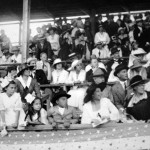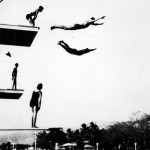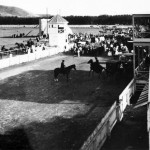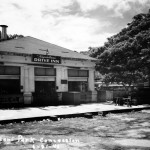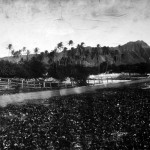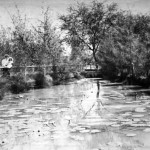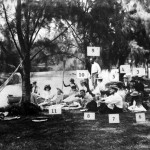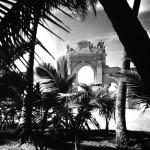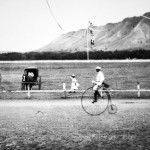The People’s Park: Kapiolani
On any given weekend, Kapi‘olani Park is filled with people, many of them participating in sports; soccer, softball, lacrosse, bocce, archery, ultimate frisbee and cricket all bring action to the “people’s park.” But few know that a trust was actually created in 1876 by the Legislature of the Republic of Hawai‘i specifically establishing Kapi‘olani Park as reserved for three primary purposes—”competition, exhibition, and entertainment.”
Kapi‘olani Park was presented to the people of Hawai‘i by King David Kalakaua, reigning monarch from 1874 to 1891. Kalakaua issued the dedication on Kamehameha Day 1877 calling it “the first public park of the Kingdom” and naming it in honor of his queen, Kapi‘olani. Thus, it exists today as the oldest—and largest— public park in Honolulu.
In 1876, Kalakaua made land shares available for a 30-year lease. For the first 20 years, the Kapiolani Park Association, a stockholders organization made up of prominent men whose initial focus was building cottages along the beachfront and creating a horseracing track, managed the park. In 1896, the Republic of Hawai‘i passed legislation that called for the formation of a board of trustees and established a trust that remains today prohibiting anyone from ever leasing or selling the land. Kapi‘olani Park preservation advocate Michelle Matson reminds us, “It was the time just before annexation, and the people of Hawai‘i were not certain of their future. To protect the parkland, the trust stated that Kapi‘olani Park would be ‘first and foremost a public park and recreation ground for the people of Honolulu.'”
However, the area that would come to make up the park had been significant to the Hawaiian people for centuries. In ancient times, the wetlands of Kaneloa and the fisheries of Kapua were integral to society. Papa‘ena‘ena Heiau, rediscovered where La Pietra is today— the former Dillingham estate—is said to have been a rectangular-shaped sacrificial heiau (temple, or place of worship) at the base of Le‘ahi, or Diamond Head. Its initial creation was supposedly for surfers to worship and find inspiration before entering the waves. The lower tier is thought to have been an ancient warrior training ground.
Much later, during Kalakaua’s reign, the area continued to be a place for competition, exhibition, and entertainment with the establishment of a racetrack.
In the 1800s and early 1900s, Hawaiian royalty and ali‘i, along with other prestigious members of society, were highly interested in horseracing. The park area was an ideal venue, and it soon became a hub of social activity. In certain areas of the park, in fact, perceptive visitors can still see date palms (hint: starting at the bandstand) that once outlined the track.
In 1898, the independent Republic of Hawai‘i officially became an American territory and soldiers were given permission to camp temporarily in Kapi‘olani Park. During the early 1900s, polo and baseball joined horseracing as park pastimes, as horseracing was banned by the 1920s. The City and County of Honolulu took over the management of the park in 1913, and, by 1930, all remaining ponds and lagoons had been filled with the dredging of Ala Wai Canal. After a brief period of neglect during the Great Depression, in the 1940s it started to become the landscaped park we know it as today.
At every turn you will find a location for competition, exhibition or entertainment. Waikiki Aquarium, for instance, started as a small attraction founded in 1904 by the Honolulu Rapid Transit & Land Company. Although not originally on parkland, it brought greater interest in Kapi‘olani Park. Today, you can find a Victorian-styled covered shelter across the street with a small plaque on the ground commemorating the era.
The first bandstand was built where the Honolulu Zoo is today on what was then called Makee Island. The bandstand resembled a small gazebo, a popular feature in Victorian gardens of the time. Indeed, King Kalakaua’s vision for the park was very much influenced by his travels abroad. His hopes were that the park would become “the frequent and general resort of all our citizens and visitors.” In 2000, a new bandstand, the fourth in Kapi‘olani Park’s history, was constructed. Modeled after the original gazebo, it has a round open-sided design with large columns featuring subtle carvings of hula performers. Since 1905, free concerts at the bandstands have been a main attraction of Kapi‘olani Park. The Royal Hawaiian Band, founded in 1836 by King Kamehameha III, still plays there a century later, every Sunday afternoon.
The creation of the Public Baths alongside the aquarium in 1907 made it so there was a public beach for the first time in the park’s history. Sand, however, had to be imported. Then, in 1915, a small zoo was established at the park, moving to its permanent location in the 1940s. Surely, one of the most striking features of the park is The War Memorial Natatorium. It was built in 1927 to commemorate island soldiers who made the ultimate sacrifice during World War I. But, Kirsten Faulkner, executive director of the Historic Hawai‘i Foundation, explains its greater significance.
“Because WWI was thought to be ‘the war to end all wars,’ it really stands as an anticipation of worldwide peace,” Faulkner says, adding that the territorial legislature of that time decided to create, as part of the memorial, an ocean-water swimming pool for people young and old. At this time, the pool has been closed for a generation. Deemed unsafe because of poor water circulation, it has fallen into disrepair. However, Faulkner says that designs stand ready to restore the memorial—complete with a clean, safe swimming pool—and the hope of many is that this glorious site will be restored, versus razed.
The Waikiki Shell can scarcely be missed, as it resembles a giant seashell with its picturesque open-air venue. But the beauty of the park itself is largely based on the trees found there, some of them planted more than a century ago. A number of banyan trees captivate visitors with their aerial roots stretching down to the ground. One banyan even forms a tunnel for runners and walkers to pass through. Ironwood trees are everywhere, and an ironwood allee along Kalakaua Avenue is notable for being designed by Scotsman Archibald Cleghorn, the father of Princess Ka‘iulani.
Over the years, Kapi‘olani Park would be revisioned and resculpted with occasional threats to it three primary purposes—competition, exhibition and entertainment. But foundations such as the Kapi‘olani Park Preservation Society, along with the park’s board of trustees and dedicated community members, are committed to keeping commerce and development at bay, while preserving Kapi‘olani Park as a gathering place for the people of Honolulu and visitors alike.
Photos courtesy Hawai‘i State Archives
- People in the stands at a horse race.
- Horse races were a popular activity at Kapi‘olani Park.
- Kapi‘olani Drive-Inn concession. June 21, 1946.
- Diamond Head from Waikiki showing the drive to Kapi‘olani Park. Photo: A. A. Montano
- Overlooking lilly pads from one of Kapi‘olani Park’s bridges. Photo: Davy Photo Co., H.I.
- Picnic in Kapi‘olani Park-in the gay ’90s. Dr. and Mrs. J. S. B. Pratt (1-2); Mrs. Albert F. Judd and Miss Agnes E. Judd (3-4). [Also pictured, according to J. Scott B. Pratt (1977); Chief Justice Albert Francis Judd (5). Sophie Boyd Judd (6). Dr. James Robert Judd (7). Allan Wilkes Judd (8). Dr. Francis Day (9). Julie Jude Swanzy (10) and Albert Francis Judd Jr. (11)] C. B. Wood. Coll.
- Divers making use of the dive platforms at the Waikiki Natatorium.
- A view of the Waikiki Natatorium through the trees. Photo: Pan-Pacific Press Bureau
- Man riding a bike on the Kapi‘olani race track. Photo: M. Gifford Est. Coll.




